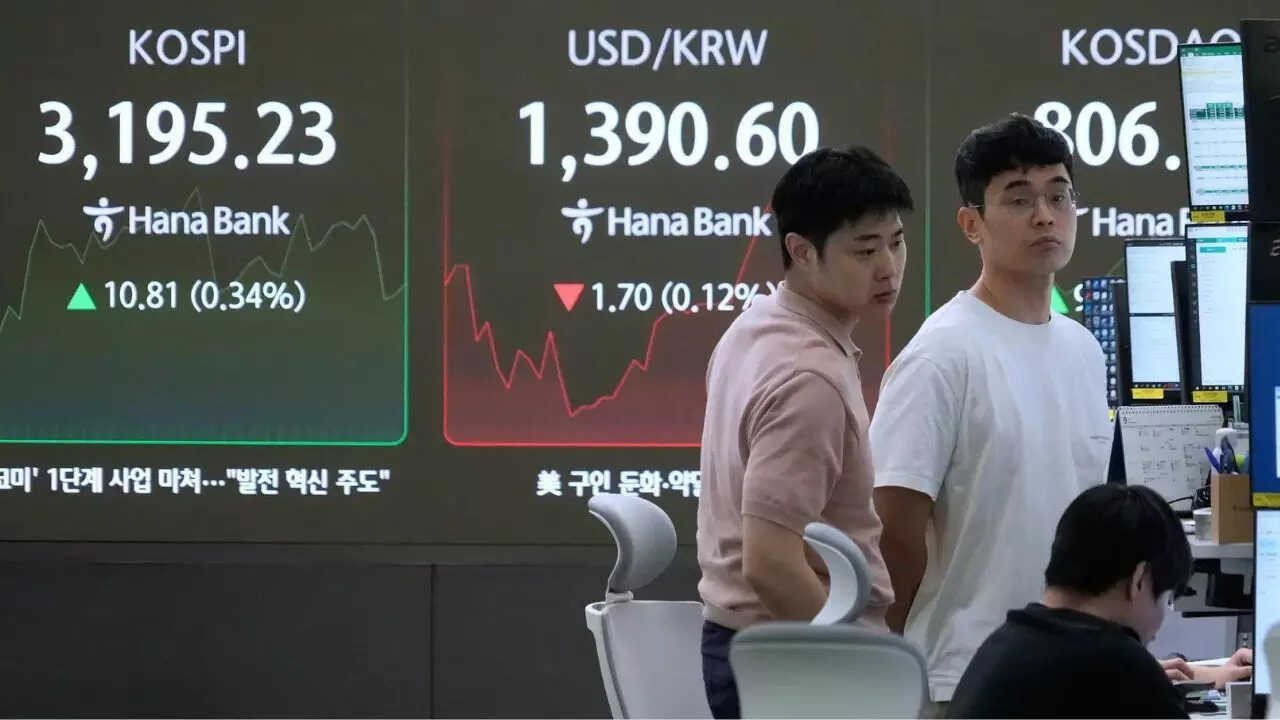Asian markets saw a positive start to the week, led by Tokyo’s surge following Prime Minister Ishiba’s resignation, which weakened the yen and boosted exporters. Oil prices also edged higher as Opec+ signaled a slower increase in output. Investors are also considering weak US labor data, which has strengthened expectations of a Federal Reserve rate cut later this month.
Navigating Choppy Waters: Asian Markets Find Footing Amidst Yen Volatility and Oil Price Gains
The Asian markets, often a barometer of global economic health, have been charting a somewhat uneven course recently. Imagine navigating a boat through choppy waters – you might see periods of calm, followed by sudden swells and dips. That’s a pretty good analogy for the current state of play. After a period of uncertainty, we’re seeing signs of cautious optimism, fueled by a weaker yen and a nudge upwards in oil prices following OPEC’s recent maneuvers. But what does this all mean for investors and the broader economic landscape? Let’s dive in.
Yen’s Dance: A Weaker Currency, Stronger Exports?
The Japanese yen has been putting on quite a performance lately, though perhaps not one that pleases everyone. Its continued weakening against the dollar has been a major talking point. A weaker yen can act as a shot in the arm for Japanese exporters, making their goods more competitive on the global stage. Think of it as a built-in discount for international buyers. Japanese automakers, tech companies, and other export-oriented industries could potentially see a boost in their bottom lines. But, on the flip side, a weaker yen can also translate to higher import costs for Japanese consumers and businesses. Everyday goods, raw materials, and energy – all become more expensive, potentially leading to inflationary pressures. Balancing these competing forces is a delicate act, and the Bank of Japan is walking a tightrope. The ripples of this delicate dance are felt throughout the region, as other Asian economies adjust to the shifting dynamics of trade and investment flows.
Oil’s Ascent: OPEC’s Influence
Oil prices have been edging higher, largely in response to OPEC’s recent decisions. The Organization of the Petroleum Exporting Countries, along with its allies, wields considerable influence over global oil supply. Their decisions to curb production, even slightly, can have a significant impact on prices at the pump and beyond. This increase in oil prices can have a mixed effect on Asian economies. For oil-producing nations in the region, it’s generally good news, boosting revenue and potentially stimulating economic growth. However, for countries that rely heavily on imported oil, the situation is more complex. Higher energy costs can translate to increased transportation expenses, higher manufacturing costs, and ultimately, inflationary pressures for consumers. Managing this delicate balance is key to maintaining economic stability.

Beyond the Headlines: Sector-Specific Performances
Looking beyond the broad market trends, it’s crucial to consider the performance of individual sectors. While some industries may benefit from a weaker yen or higher oil prices, others might face headwinds. For example, technology stocks, which are often sensitive to global economic conditions and interest rate movements, might react differently than, say, energy companies. Understanding these sector-specific dynamics is vital for investors looking to make informed decisions. Are there opportunities in renewable energy investments in Asia amidst rising traditional energy prices? This is one of many critical questions to consider.
Regional Variations: A Mosaic of Growth
Asia is not a monolithic entity. Each country boasts its own unique economic characteristics, strengths, and vulnerabilities. Some economies are heavily reliant on exports, while others are more driven by domestic consumption. Some are major commodity producers, while others are primarily importers. These variations mean that the impact of global events, such as currency fluctuations and oil price movements, can differ significantly across the region. Investors need to take a nuanced approach, carefully considering the specific circumstances of each country before making investment decisions.
Looking Ahead: Uncertainty Persists
While the recent market activity suggests a degree of stability, uncertainty remains a significant factor. Global economic growth is still sluggish, and geopolitical tensions continue to simmer. These factors could easily disrupt the current positive momentum. Investors should remain vigilant, closely monitoring economic data, policy announcements, and geopolitical developments. Diversification and a long-term perspective are crucial for navigating these uncertain times. Consider also the opportunities arising from technological innovation. Could we see Asian Stocks continue to climb with new tech breakthroughs?
A Cautious Outlook for Asian Stocks
The Asian markets are currently navigating a complex landscape characterized by yen volatility and oil price gains. While these factors offer potential opportunities for certain sectors and economies, they also pose challenges for others. A nuanced understanding of regional variations and sector-specific dynamics is essential for investors seeking to capitalize on these trends. While we can’t predict the future with certainty, a balanced and informed approach is crucial for navigating the current market environment and positioning oneself for long-term success in the dynamic Asian markets.







